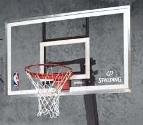
Hulu just added its first sports content this week, with content from the NBA and the NHL. Sure, the pickings are slim right now (there are only two NBA games up, they’re both months old, and they’re both Lakers games) but the site is just getting off the ground. The potential for this to be a sports hot spot is there.
Hulu now offers these sports features, free to everyone:
NBA
- 2 full-length games (including Kobe Bryant’s 81-point game)
- Daily Recaps
- Highlight reel: NBA 5-star plays
- Top 10 highlights
NHL
- NHL Best of The Week - Season 2007-08 (highlights the week's best assists, goals, saves, and hits)
- NHL Classics
- NHL Player Profiles 2007-08
- NHL Regular Season 2007-08
Action Sports
- Firsthand
- The 808 from Fuel TV
College Football
- The Boise State-Oklahoma battle in the 2007 Tostitos Fiesta Bowl
There’s no doubt that by the next time I log into Hulu there will be significantly more content. The real question is how NBC, Fox and their partners will transition these sports events from TV to online distribution. The current advertising model relies on short commercial breaks (with ads from Intel, Priceline, Direct TV etc), banner ads, overlays (promotional graphics that roll over the bottom of the screen) and maybe extra sponsorship dollars from events sponsors. Some games also offer a choice to viewers: to watch the game with commercials, or watch a two-minute advertisement at the beginning. (The Wizards/Lakers game is currently being shown with a preview for “Baby Mama.”)
The main obstacle for Hulu, going forward, will be whether it can attract other major content providers like CBS and ESPN. If Hulu can expand its broadcasting capabilities then it will be bigger than YouTube, bigger than social networking, maybe bigger than Google.

Notes:
NBC Sports broadcasts the Olympic Games (through 2012), the NFL, the NHL, Notre Dame Football, the PGA Tour, the USGA Championships, Wimbledon, the French Open, RCA Tennis Championships, the Dew Action Sports Tour, and more.
Fox Sports has broadcast rights to NFL games, MLB (1996–present), college football's Cotton Bowl, most of the Bowl Championship Series (BCS National Championship Game, Fiesta Bowl, Orange Bowl, and Sugar Bowl), and NASCAR.






